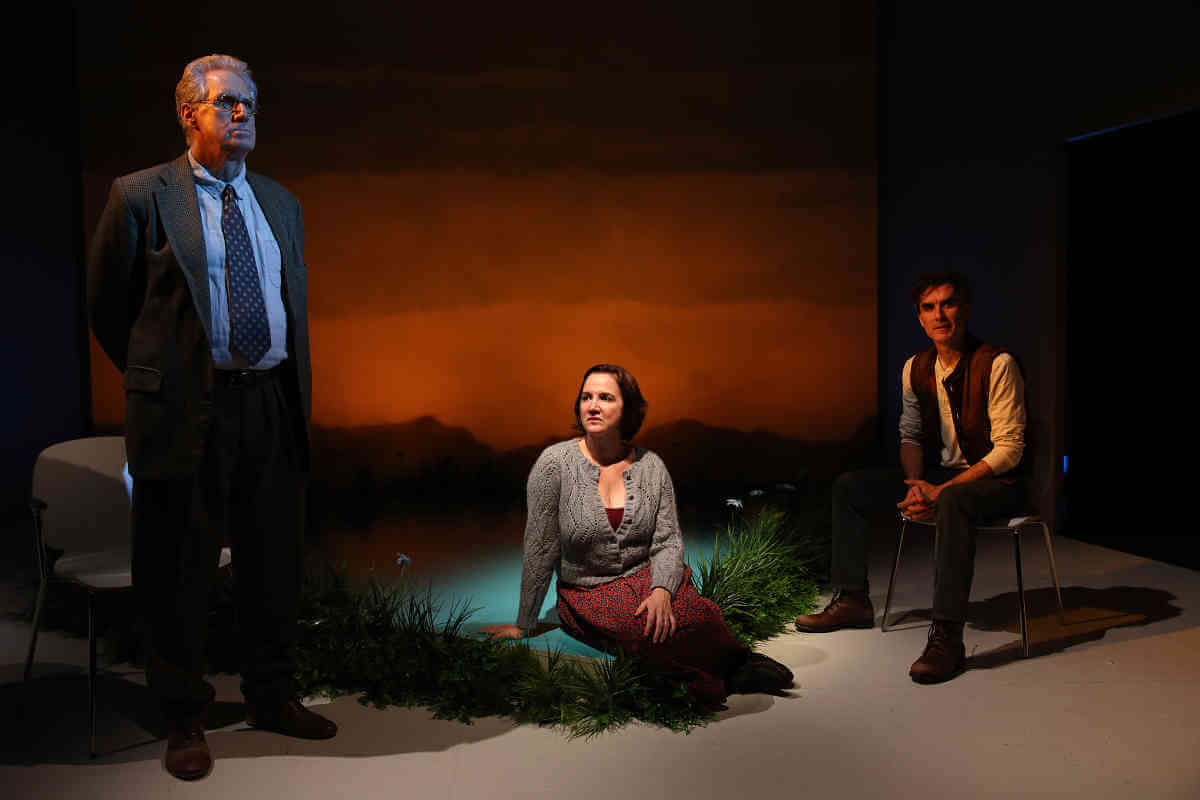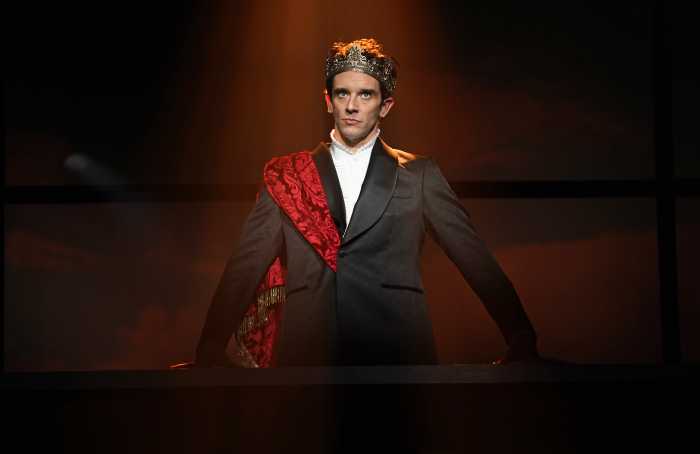Brian Friel (“Dancing at Lughnasa,” “Faith Healer,” among many others) has been hailed as one of Ireland’s greatest master storytellers, an “Irish Chekhov.” And if you need proof, head on over to Theatre Row where the Keen Company is staging a superb, elegantly restrained revival of his “Molly Sweeney.”
Under the razor-sharp direction of Jonathan Silverstein, the eloquent memory play is reduced to its purest elements. The spare scenic design, by Steven Kemp, features a verdant flower patch set against an expansive azure sky, made all the more expressive by Anshuman Bhatia’s lighting.
“Molly Sweeney” showcases what the Irish do best: storytelling. And this bittersweet tale, about a woman who lost nearly all her sight as an infant and undergoes risky surgery to restore it, is told in the form of intertwined monologues by a cast of three.
As 41-year-old Molly tells it, she has long since adapted to her blindness, relying on other senses of touch, taste, sound, and smell to create a world that she navigates confidently, even happily. But her new husband Frank, a starry-eyed philosopher of sorts, is bent on finding a cure for her condition. He introduces Molly to Mr. Rice, a once-admired ophthalmologist seeking to refurbish his reputation, and she is soon subjected to dicey surgeries and an exhausting battery of tests.
The question isn’t so much whether the treatment will restore her sight, but rather if Molly can cope with the results, which could deliver a seismic jolt to her equilibrium. The neurological and existential dangers are real.
When the play transferred from Dublin to Off-Broadway in 1996, Friel was worried that fidgety New Yorkers would not sit still for a nearly two-and-one-half-hour play with no action that relied on soliloquies. Not only do the characters have no interactions, they are not even aware of each other’s presence onstage.
Yet the intricate story is so fascinating, and in this production the performances so accomplished, I was riveted from start to finish.
Pamela Sabaugh doesn’t merely perform the title role, she inhabits it. Her Molly is a delicately balanced stew of conflicting emotions — confidence, fear, hope, and despair. Her Irish brogue registers as completely convincing. A longtime member of Theater Breaking Through Barriers, she has juvenile macular degeneration and is herself sight-impaired.
Sabaugh is reprising the role she played over a decade ago at the Amaryllis Theatre Company in Philadelphia, then the first blind actress ever to play Molly.
Tommy Schrider lends a manic, often comic air to the role of Frank, injecting a welcome shot of energy to the proceedings. Paul O’Brien brings an unexpected vulnerability to his portrayal of the proud, pompous Mr. Rice. It’s abundantly clear that he has as much riding on the success of the treatment as Molly does.
Perhaps most remarkable is that this astonishing “Molly Sweeney” busts pervasive myths. Blindness isn’t always an all-or-nothing proposition, there are often, so to speak, shades of gray. Sighted people naturally assume that blindness is a disability to be avoided at all costs. Thanks to Friel’s poetic meditation on the topic and Sabaugh’s sensitive portrayal, we see blindness from another perspective, as something that can be embraced, not feared.
What’s more, in today’s #MeToo political climate, this production allows us to re-evaluate the drama’s feminist undercurrents. Both Molly’s overbearing husband and her doctor appear to coerce her into taking great risks with her body. Frank says his gentle wife has “nothing to lose.” He couldn’t be more wrong.
MOLLY SWEENEY | Keen Company, Theatre Row, 410 W. 42nd St. | Through Nov. 16: Tue.-Thu. at 7 p.m.; Fri.- Sat. at 8 p.m.; Sat. at 2 p.m., Sun. at 3 p.m. | $28-$65 at keencompany.org | Two hrs., 20 mins, with intermission




































